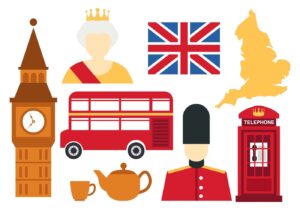Want to Work From Anywhere? Here Are 9 Places We Can Personally Recommend
12 min readAs you read this article at your desk in your pajamas (or at your desk in your office, wishing you were still able to work at home in your pjs), you don’t need us to tell you about the cultural shift to remote work.
For many, that shift has allowed them to weave more leisure travel into existing business trips (a lovely trend with the cringeworthy name of “bleisure travel”); for others, it has unlocked the opportunity to pack a few bags and head to a new destination for an extended time, where they can live and work for as long as their bosses, sanity, and paperwork allow.
Many of us at AFAR have been lucky enough to work remotely around the world, whether it was for a week or several years, and whether we considered ourselves a “digital nomad” or just an editor who preferred to tackle her to-do list over tacos made in a Mexican beach town rather than in a Chipotle in Manhattan.
Below, we’re sharing some of our favorite cities and towns that we’ve personally been to and worked from. These are places where a remote worker can settle in and really get their jobs done, while also easily take advantage of cultural, culinary, and social offerings.
Medellín, Colombia
[embedded content]
Colombia has attracted travelers’ attention as of late—its number of incoming international tourists grew 222 percent between 2010 and 2022. (It’s no wonder new cruise itineraries are coming to the country later in 2024.) One of the cities drawing nomads in droves is Medellín, located in Colombia’s northwest. The city of about 4 million people has been associated with drug trafficking in its past, but efforts from the community and government have turned it into a digital nomad hot spot. Remote workers are concentrated in two neighborhoods here: Laureles near the city’s central area and El Poblado in the south. The neighborhood bars and mom-and-pop restaurants of Laureles give the neighborhood a more local atmosphere (one-bedroom apartments in this neighborhood start at around $600), while El Poblado’s coworking cafés and boutique gyms make it extremely accessible for a digital nomad novice (one-bedroom apartments start at around $1,000). Because the country shares the East Coast’s time zone—though without daylight savings—travelers won’t be up in the wee hours of the night for their Zoom meetings.
When you’re not working, the city itself has a host of restaurants and bars to try. Colombia is the third-largest exporter of coffee in the world, so enjoying the brew here is a must. While the country’s high-quality beans have historically been exported to other countries, coffee shops such as Pergamino are keeping some local (and it also doubles as a relaxed place for some heads-down work). Surrounded by the Andes mountains, Medellín is also very close to nature. Take the cable car from the Acevedo Metro station to the 40,000-acre ecological nature preserve Parque Arví and you can explore more than 50 miles of walkable trails (plus, the city views are pretty amazing), or take a 30-minute car ride to Guatapé and scale a crazy high rock. Medellín is about an hour-long flight from big cities Cali, Cartagena, and Bogotá, making it a central place from which to explore other parts of the country. —Chloe Arrojado, associate destinations editor
Todos Santos, Mexico
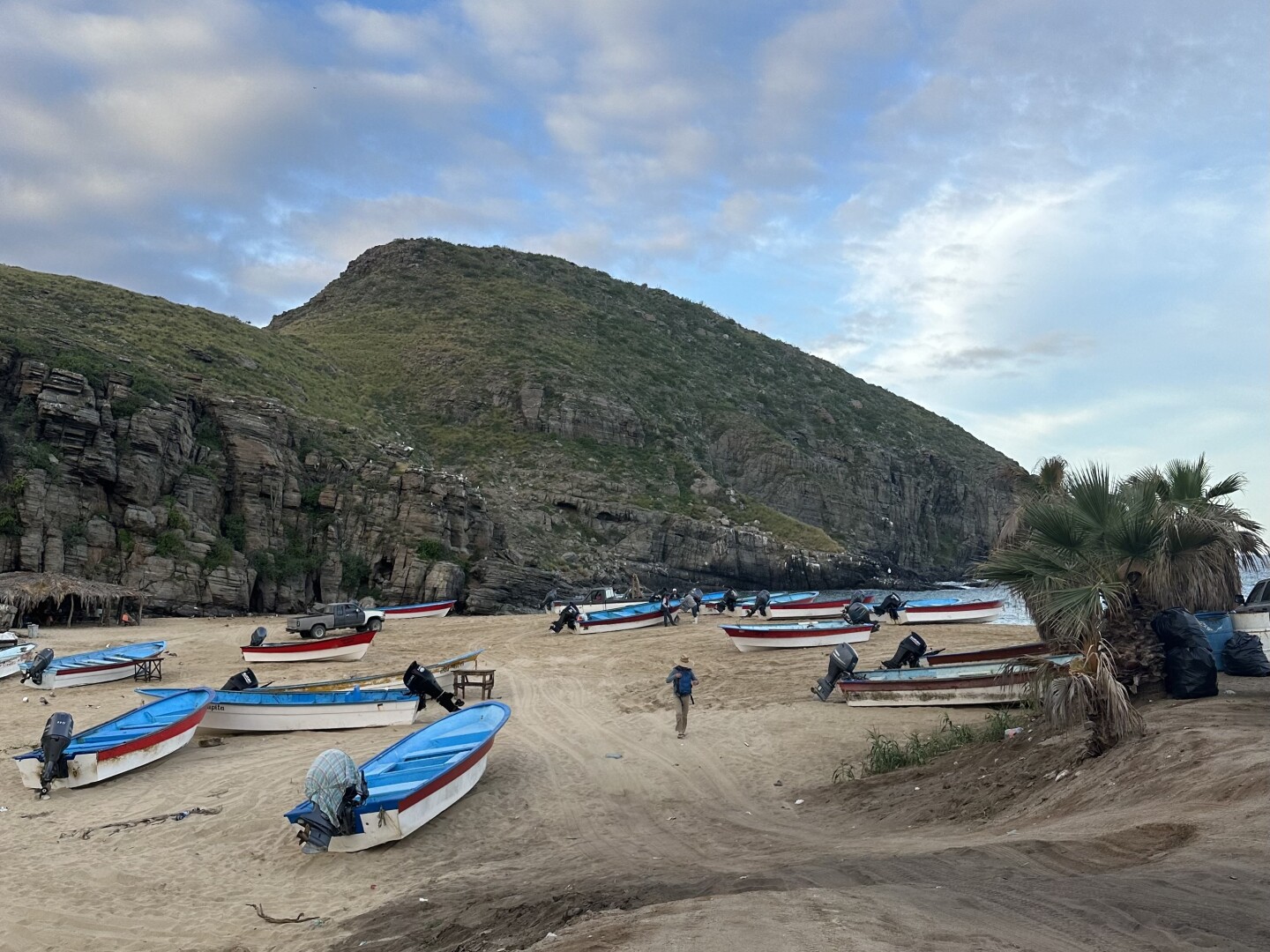
The relaxed, beach-town vibe of Todos Santos makes it a fine place to get some work done.
Photo by Nicholas DeRenzo
This little town sits an hour’s drive from Cabo San Lucas and San Jose del Cabo on the Baja California peninsula in Mexico. Todos Santos itself is a historic mission town, but the wider region includes Pescadero, a burgeoning surf community, a short drive south. Both have an active and engaged expat community, and a relaxed, laid-back vibe. During a recent week-long stint working here, my husband and I found that there was just enough to do to keep us entertained (releasing baby turtles at sunset, hiking the Los Lobos trail, drinks at a bar on the beach like the Green Room) but not so much that we felt any FOMO while heads down on our computers during the day.
We loved working remotely here because of its relaxed pace and beachy vibes. However, we found that the Wi-Fi was significantly better the closer we were to the downtown area of Todos Santos. I would avoid staying in the Las Tunas neighborhood (at least for now) where reception can be on the spotty side. —Jessie Beck, associate director, SEO, product, and video
São Paulo
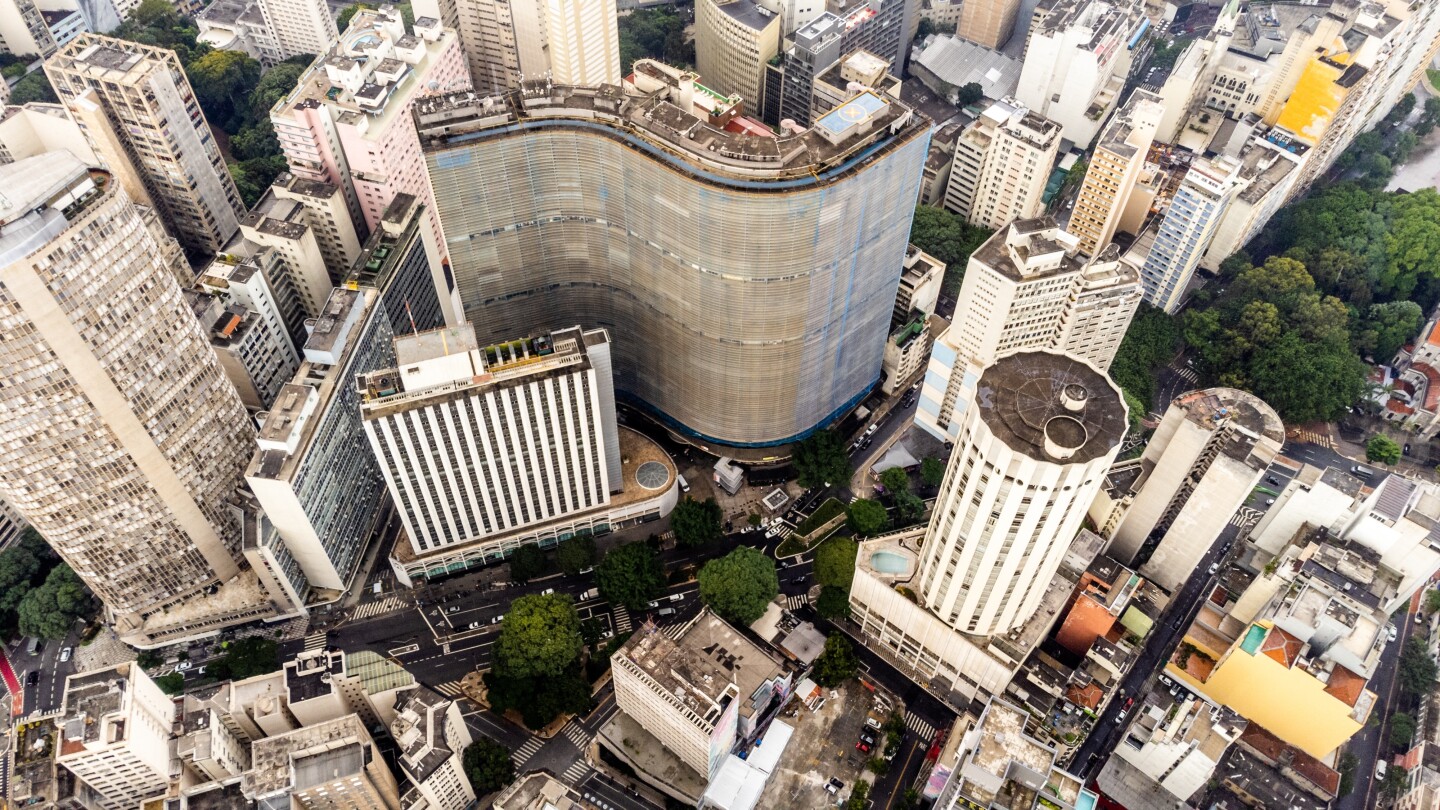
Take a break from meetings to appreciate the work of Brazilian architect Oscar Niemeyer, whose wavy Copan building is one of many standouts in São Paulo.
Photo by Shutterstock
Of the many perks of working remotely in São Paulo is the fact that it’s in the Brasilia time zone, which is only one or two hours ahead of the Eastern time zone (depending on daylight savings), making collaborating with colleagues on the East Coast easier. Even better, it’s a business hub with lightning-fast Wi-Fi, a distinctive combination of modernist architecture and tropical flora, epic nightlife, and an exchange rate that attracts a large expat community. Coworking spaces and cafés are plentiful, as are affordable restaurants and short-term stays. (Try an Airbnb in the Oscar Niemeyer–designed Copan Building for floor-to-ceiling windows.) There are many neighborhoods to explore for art deco buildings, such as Jardins and Higienópolis, and Parque Ibirapuera has more of Niemeyer’s work. Plus, when the weekend comes, the beach is just a couple of hours outside of the city. —Ami Kealoha, branded and sponsored content director
Puerto Rico
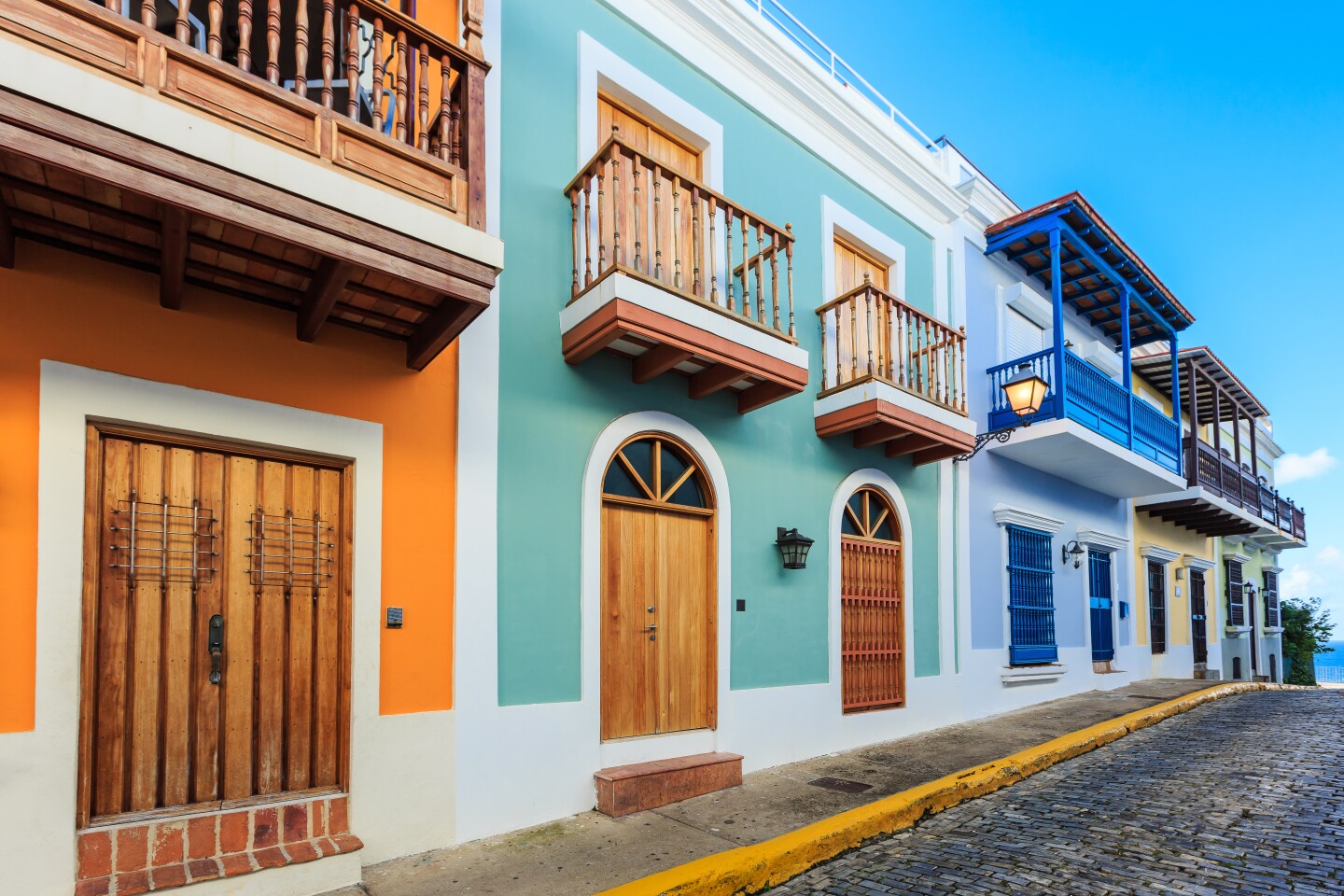
Puerto Rico’s capital, San Juan, is where remote workers congregate.
Photo by Shutterstock
American remote workers don’t necessarily need a passport for a tropical digital nomad experience. Fly to the Caribbean archipelago of Puerto Rico and a host of crowdless beaches and island foods await. Puerto Rico is part of Atlantic Standard Time—which runs an hour ahead of EST, except when mainland USA jumps forward an hour in the summer and early fall, when the time zones match—so even West Coasters wouldn’t be too out of sync from their coworkers. And the ease of adjusting to Puerto Rico extends beyond the time zone, considering that it’s a part of the United States. The archipelago uses the U.S. dollar, most U.S.-based phone plans still work in Puerto Rico, and English is one of the official languages here.
Most of Puerto Rico’s coworking hubs, such as Piloto 151, are located in its capital, San Juan. Remote workers are also usually based there, too: The colorful buildings of Old San Juan are popular places to stay, although expensive—a month-long Airbnb here starts at around $2,000 for a one-bedroom apartment. Head out of the historic center to the Santurce neighborhood and you can explore a less tourist-filled area, where a one-bedroom apartment starts at around $1,300.
Nightlife in San Juan is the liveliest on the island, and some of the best venues to dance the night away include La Placita and La Factoría. But on the weekends, take a break from the city and explore Puerto Rico’s lesser-known places. Getting from the west side of Puerto Rico’s main island to the east takes about three hours by car, so day trips are doable. Some of the best things to do include diving into the roast pork of the ruta de lechon in the mountain municipality of Cayey or hiking the Guanica State Forest along the south coast (but prepare for some windy roads along the way). Because public transportation is not available to get around Puerto Rico’s main island, renting a car is going to be your best bet. —C.A.
Seattle
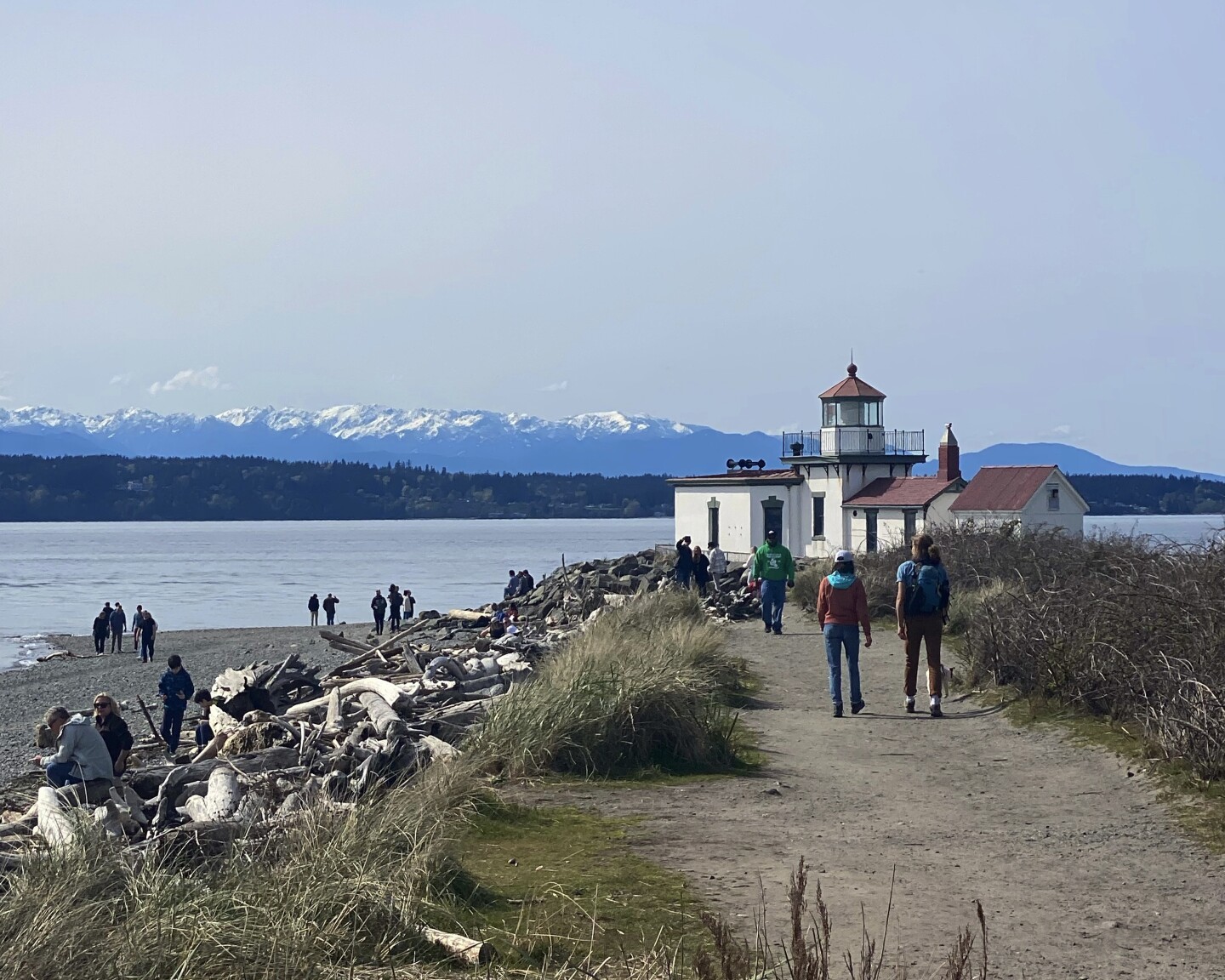
Seattle’s natural beauty and outdoor adventures make the nonwork part of remote working fun.
Photo by Nicholas DeRenzo
As a thriving tech hub on Puget Sound surrounded by evergreens and mountains, Seattle is ideal for digital nomads looking to spend more time outdoors in between work sprints. While it’s generally a pricey city, you can also find unpretentious options—the four-star Pan Pacific Seattle offers a high level of service and comfort with amenities for those working remotely, like in-room desks with Herman Miller chairs and high-speed Wi-Fi.
The Pioneer Collective is an independent chain of coworking spaces with locations in the Ballard and Belltown neighborhoods (both lively and filled with restaurants, boutiques, and bars), and café culture is strong in the birthplace of Starbucks, with many independent spots that don’t mind if you settle in with your laptop. Espresso Vivace is one of the city’s mainstays for great coffee—plus it has plenty of outlets and a garage door that rolls up when the weather is warm. If you like working alfresco, try spacious Milstead & Co., where the Wi-Fi also works in the outdoor seating area. Another spot with ample space, Miro Tea is ideal for those who prefer leaves over beans.
The food scene thrives here too with an abundance of standout options, including Fuji Bakery’s two locations. Grab one of their flaky, buttery croissants to fuel your productivity, or celebrate a finished project with the Japanese Strawberry Shortcake. When it’s time to close your laptop, head to the Magnolia neighborhood for coastal views and Discovery Park (Seattle’s largest park and home to forests, cliffs, and tidal beaches). Or hop over to the Belltown neighborhood to shop or take a class at the Seattle Glassblowing Studio; the city is a hub for the art form thanks to longtime resident and glassblowing superstar Dale Chihuly who founded the Pilchuck Glass School about 1.5 hours from downtown.
If you’re in town between July and September, visit the Ballard Locks to see salmon migrating through the fish ladder. To view Seattle from a different perspective, hop the ferry to Bainbridge Island (shop and eat in “Little Norway” in Poulsbo) or take a private boat out on Puget Sound. —A.K.
Los Angeles
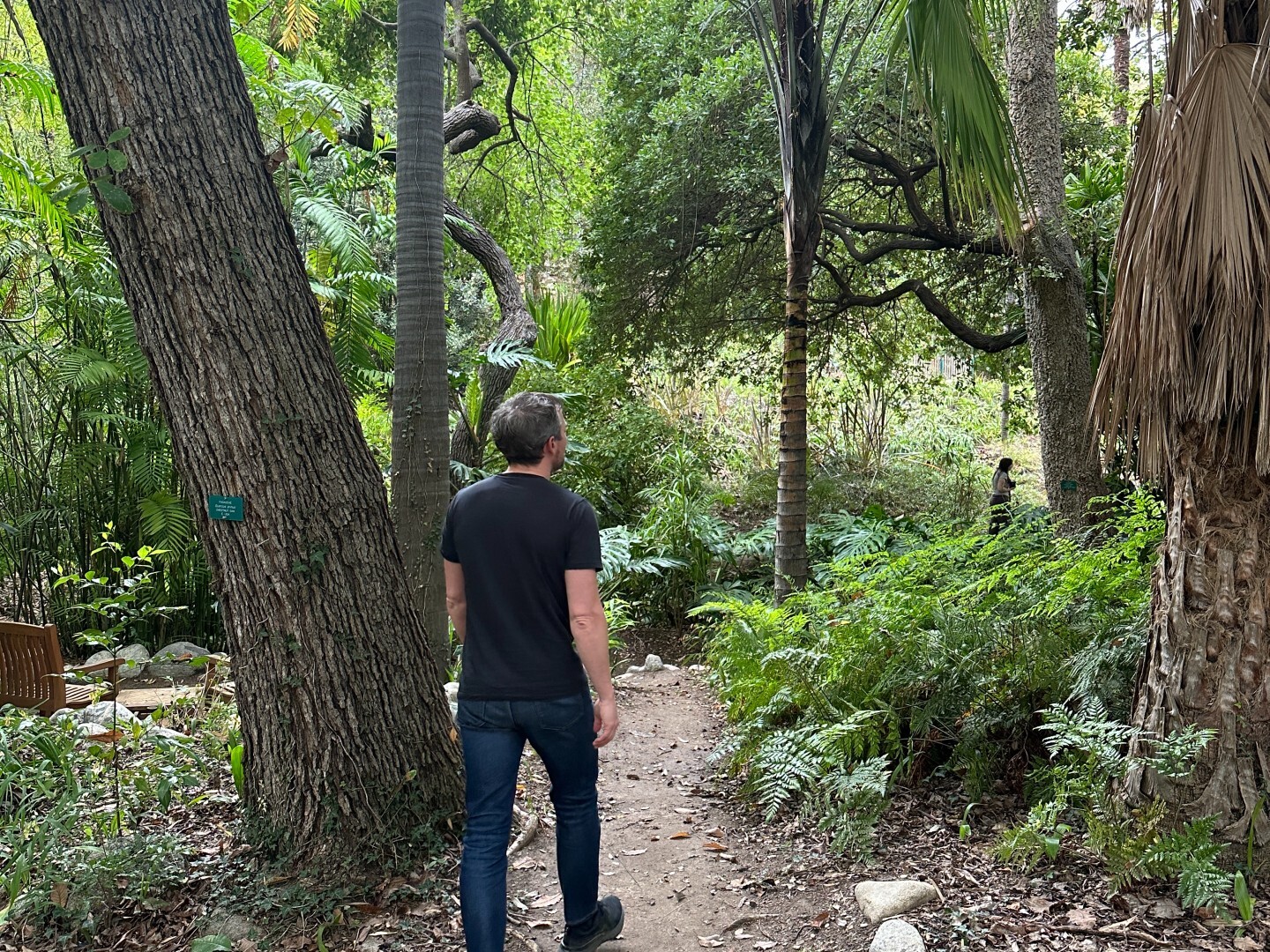
You can hunker down at many cafés in Los Angeles, or you could stroll through the Mathias Botanical Garden at UCLA.
Photo by Ami Kealoha
Rapidly growing art and tech scenes have added to the gravitational pull of Los Angeles and its warm weather, beaches, and many cosmopolitan delights in the Pacific time zone. You can join out-of-work actors studying lines and musicians writing lyrics at any number of friendly coffee shops and coworking spaces, including an outpost of NeueHouse and three Soho House locations for members.
Santa Monica and Venice are ideal for urban beaches; downtown is increasingly lively with ample restaurants, including one of nine locations of Sugarfish, a superlative spot for sushi. The Silver Lake area offers the renowned Sqirl among other forward-thinking establishments that cater to the creative types who call the area home, and Hollywood is awash in nightlife and such great restaurants, as Connie & Ted’s, which serves delicious seafood. You can also hit up cultural riches, including the Hammer Museum (follow it with a visit to UCLA’s nearby Mathias Botanical Garden for a perfect afternoon), and sites such as the La Brea Tar Pits. —A.K.
Reykjavík, Iceland
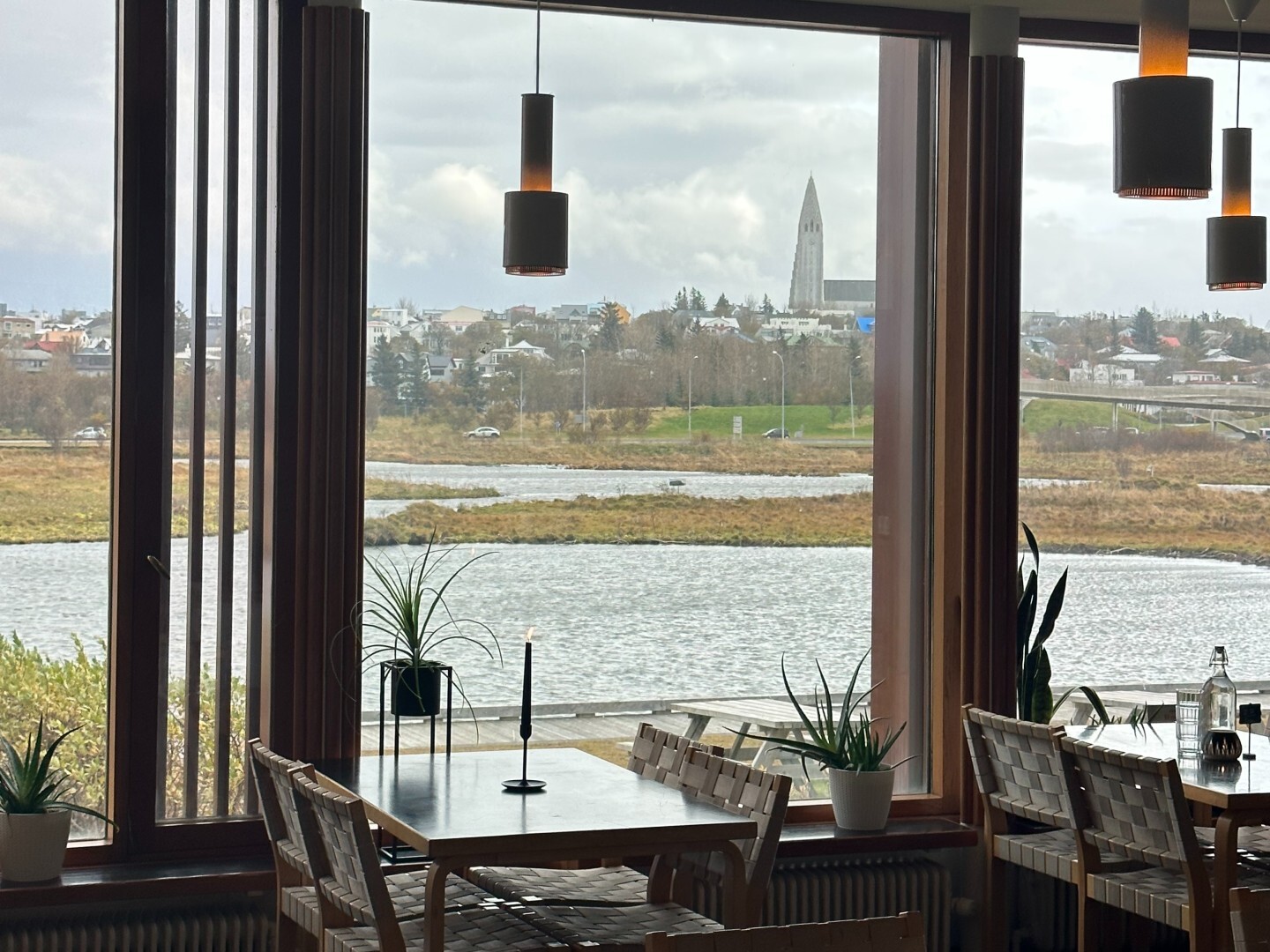
The restaurant at Reykjavík’s Nordic House welcomes laptop workers during the day and turns into a vegetarian restaurant at night.
Photo by Nicholas DeRenzo
The Icelandic capital is a compact city, which makes it ideal for a work-play combo trip: You can spend the morning gallery-hopping or taking a puffin- or whale-watching trip and still be back to your hotel or a coffee shop in time for that important Zoom call. (Reykjavík is only five hours ahead of New York.) In addition, because so many travelers use the city as a home base and then spend their days out exploring the rugged countryside, many of its bars and coffee shops are blissfully crowd-free during the day—especially in the shoulder and off seasons.
During a weeklong trip, I hung out with my laptop in Hlemmur Mathöll, a food hall in the city’s old bus terminal (don’t miss lunch at the innovative Skál); Kaffi Ó-le, a cheerful café serving locally roasted coffee; and Kaldi Bar, a homey bar focused on Icelandic microbrews. Even better were the various museum cafés around town, at spots like the National Gallery of Iceland and the Reykjavík Art Museum Hafnarhús. Especially lovely is the Alvar Aalto–designed Nordic House; by day, the on-site Sónó Restaurant has a cozy café atmosphere that’s welcoming to laptop-toting workers, before turning into a popular vegan and vegetarian restaurant at night, and there are even binoculars strewn about for spotting birds in the marsh just outside the window. (For a bird lover like me, it can be a dangerous productivity-killer.)
Iceland has a reputation for being expensive, but there are some affordable hotel options, including the Exeter Hotel, which has an on-site sauna, bakery, and cult burger shop, and Kex Hostel, a hybrid hotel-hostel housed in an old biscuit factory. If you’re traveling alone, Kex runs a tour and adventure operator called Kexland, which may inspire you to leave behind the laptop for a day and hang out with other digital nomads as you soak in a hot spring, hike through an ice cave, or head out after dark to photograph the northern lights. —Nicholas DeRenzo, contributing editor
Melbourne, Australia
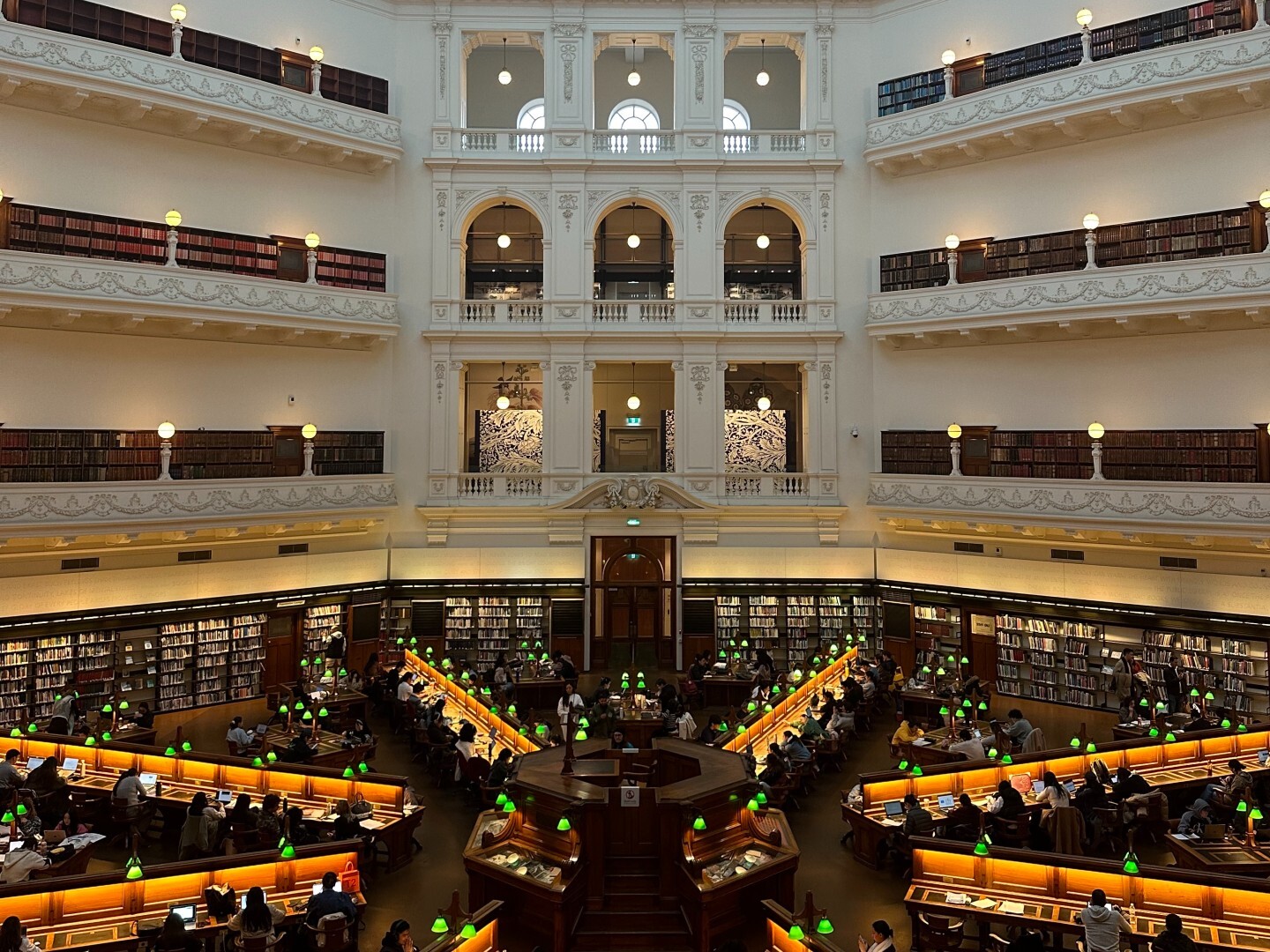
The 170-year-old State Library Victoria is a stunning place to work for the day.
Photo by Nicholas DeRenzo
There’s no two ways about it: Melbourne is smack dab on the other side of the planet from the United States, so if you have any of those pesky things like colleagues or meetings, working from the Victoria capital can prove tricky. But if you control your own schedule, it’s a city practically made for digital nomads, with a full-on coffee obsession that has resulted in one of the best café scenes the world over. Collingwood and Fitzroy are particularly strong neighborhoods for wandering and finding the perfect FWWF (flat white and Wi-Fi) pairing.
If you really want to treat yourself, head to the State Library Victoria, a 170-year-old neoclassical institution with exhibits (including outlaw Ned Kelly’s armor), strong Wi-Fi, and plenty of outlets; the octagonal domed La Trobe Reading Room may be the most beautiful interior space on the continent, so you won’t be too sad that you’re not out and about being more of a tourist.
Hotel-wise, I was partial to lyf Collingwood, which has affordable rooms, shared kitchen and laundry facilities, and a coworking-centered lobby with work from local artists and even a small aquaponic garden, from which you’re invited to snip herbs and microgreens to jazz up your sad desk lunch. Another stylish option is the new Ovolo South Yarra, which has a spacious, quiet basement lounge that’s ideal for quality time with your spreadsheets and is a nice long stroll from the Royal Botanic Gardens Victoria. —N.D.
London
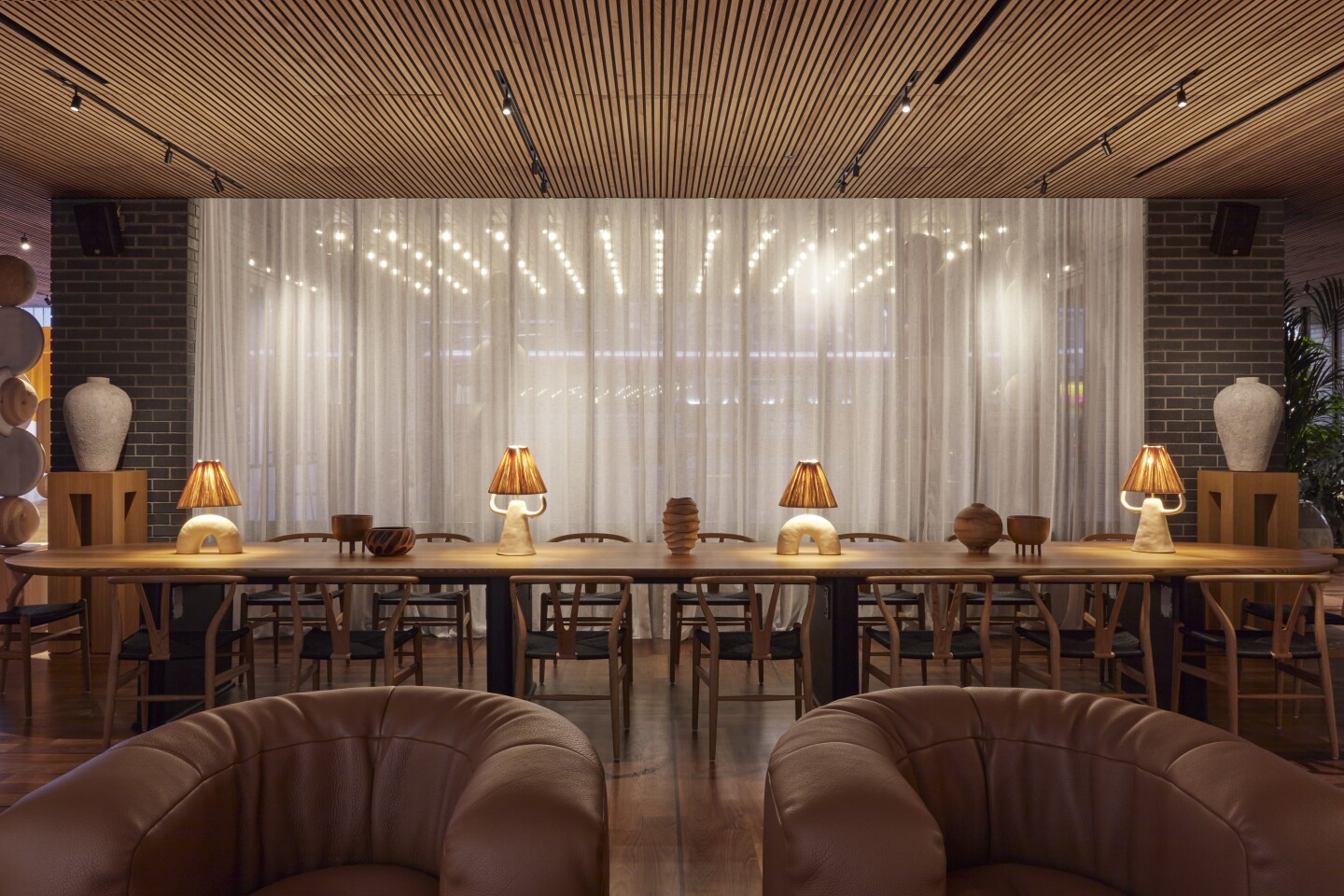
World-class museums, restaurants, and theater—London has it all. Even cafés and hotel lobbies with top-notch Wi-Fi.
Courtesy of One Hundred Shoreditch
Though the pound has recovered slightly from its record lows in 2022, London remains a relative bargain for U.S. digital nomads who are into art and theater. (Most museums are free to enter, and West End tickets are remarkably affordable compared to Broadway prices.) And with just a five-hour time difference from my home in New York, I found it relatively easy to schedule meetings in the later afternoon before heading off to my next show.
In a large city like London, it’s also easy to find free Wi-Fi in a coffee shop or hotel lobby. (The Standard hotel and One Hundred Shoreditch both have large living-room-like lobbies filled with other remote workers during the day.) But I spent most days pairing a spin through a museum with a few hours of work inside their cafés. One morning, I responded to emails in the atrium of the British Museum. (Beware loud groups of children on field trips: This is not the place for taking calls.) Another day, I visited the grand Somerset House’s laptop-friendly café after poking my head into a few galleries being set up for its annual Print Fair. My most productive afternoon was at the café at the Tate Britain, after a quick stroll through the galleries to find one of my favorite paintings: Ophelia by John Everett Millais. I spent the next few hours writing next to a large window with a cup of tea and a large slice of lemon cake.
I swapped apartments with a friend during my two-week WFLondon trip last spring—yes, just like The Holiday. But London isn’t lacking for great hotels. Rooms at the aforementioned One Hundred Shoreditch are generally under $300 and within walking distance of all the great restaurants and shops East London has to offer. London also has four Hoxton hotels in Shepherd’s Bush, Holborn, Southwark, and Shoreditch, which are known for affordable rates and expansive lobbies designed for coworking. —Lyndsey Matthews, senior commerce editor


